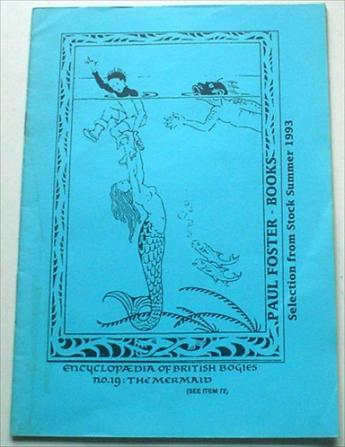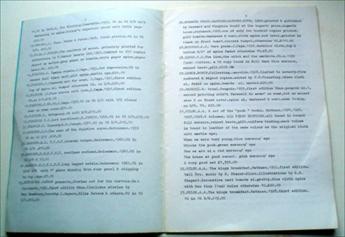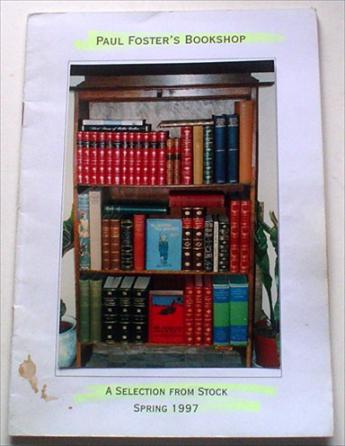Actualités
Paul Foster Books. First Catalogue 1993

By Paul Foster
Yesterday I received several boxes, from my Printer, containing my latest Catalogue. It is always an exciting time for a bookseller. Months of hard work, buying, researching and cataloguing the books, not to mention proof reading and checking photo images, have gone into this one little volume, and it is as near to publishing as most book dealers ever get.
This latest catalogue is a selection of the more interesting items I have bought recently, listing 190 books over 48 text pages and with a sixteen page colour section full of photographs in the middle, the whole lot wrapped in colour printed, gloss finished, covers. It is a modest little booklet by some standards, but when I compare it to the catalogues I was producing back in the 1990's it seems a world away. My business, and my catalogues, have seen remarkable advances in technology over the last 20 years.
My first catalogue, issued in 1993, was a simple affair. I didn't have a computer or word processor. I simply piled the books up, in alphabetical order, on the table and typed out my descriptions, book by book, onto A4 sheets on an old manual typewriter. These completed sheets were than handed into a local printer, a blue card cover was decided on, and he produced, I think, about 200 copies for me. This catalogue was simply my typed pages copied and reduced to A5, with all the missprints, Tip-ex marks and smudges intact.
I didn't have a mailing list back then, so got hold of a directory of all the book dealers in the UK and sent a copy to those that listed Children's books, Bindings and Literature as specialities. Luckily, some of those dealers ordered books and so there I was, a catalogue bookseller. I gave the rest away to customers who bought books from me either at book fairs, or my market stall in Ealing, West London. A couple of those customers who were given catalogue number 1 are still buying books from me 18 years later. I don't know whether either has kept a complete set of my output, or whether they are binned after ordering whatever interests them.
Later in the 1990's I started using a Computer which changed things dramatically. I bought a specialist bookselling program that arranged my stored listings in catalogue format at the push of the "Create Catalogue" button. Getting creative, I started laying out a selection of the books listed, either on the floor or on a bookcase, and taking colour photos of them. I would then take the film into the local chemist and when the negatives were ready ask for 300 prints ( I had started to develop a mailing list by then) of the best image. These were then stuck onto the front cover of each catalogue, within a plain line border I had asked the printer to include.
Each photo was manually stuck into position by me, using a glue stick. This process lasted until the 2000's when, thankfully, colour printing, digital photography and Photoshop programs all became cheaper and easy to use.
These days the print run has grown to 1000 copies, the number of colour photos to about 80 and the paper is thicker and of a better quality, the covers with a high gloss finish. The catalogues still contain a mixture of books on different subjects and from all ages. This latest one has books from the Sixteenth century to the very end of the Twentieth, including a 1587 first edition of Polemon's Second Book of Battailes, an important Elizabethan source book used by George Peele when writing his 'Battle of Alcazar', up to a Harry Potter 1st edition from 1997. These sit alongside a selection of titles including First editions by Oscar Wilde, Beatrix Potter, Charles Darwin, Dr. Seuss, James Joyce, & Voltaire. There are several signed works as well, including books signed and inscribed by Evelyn Waugh, Winston Churchill, Robert Mapplethorpe, Ian Fleming, Roald Dahl, Joseph Conrad, and Arthur C. Clarke, among others. The books are mainly First editions of English and American Literature, Childrens and Illustrated titles, Fine leather bound books and special, signed, inscribed or limited editions, although there are a handful of other subjects covered.
The article was published on the Paul Foster Books Blog, it is presented here by permission of the author.



